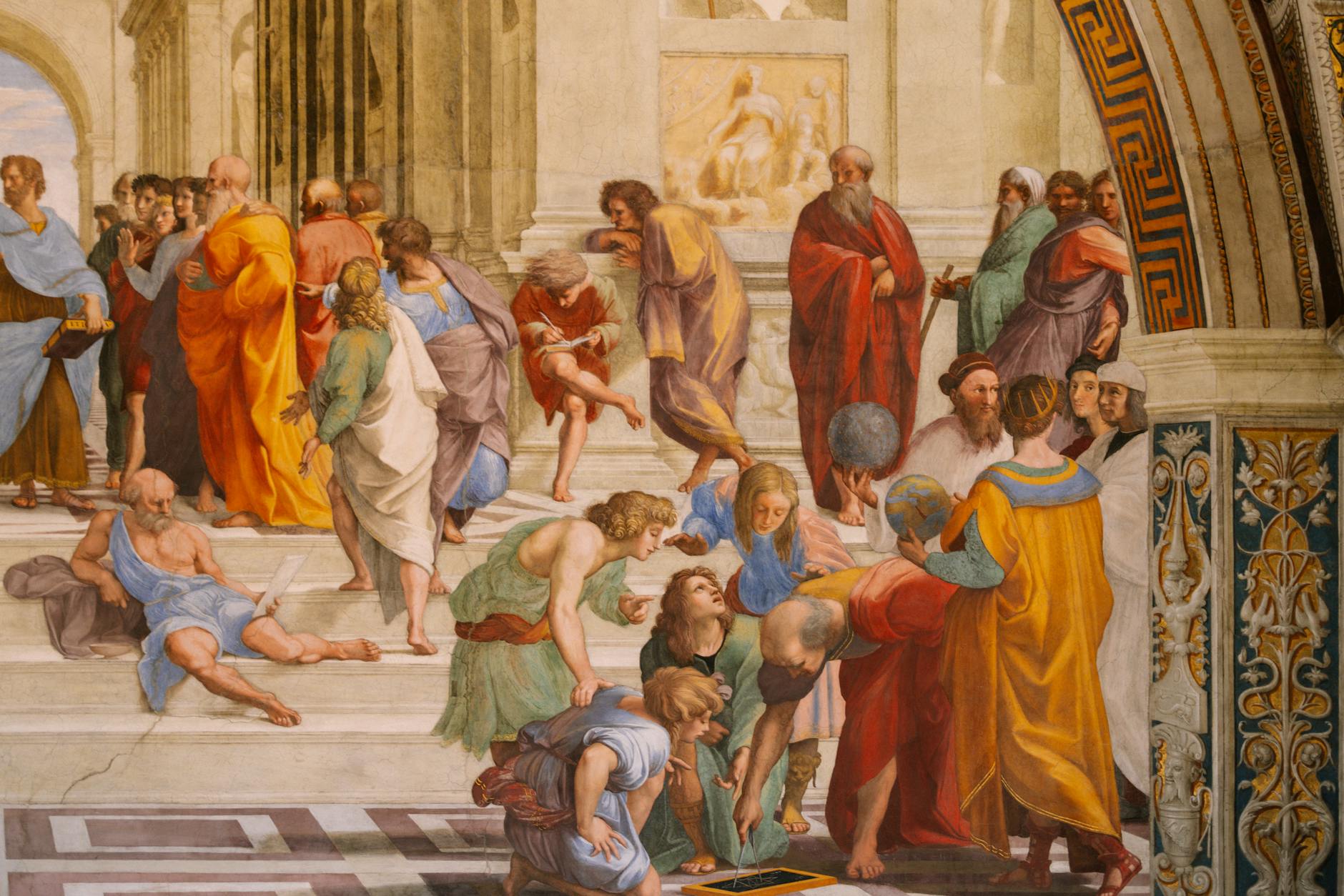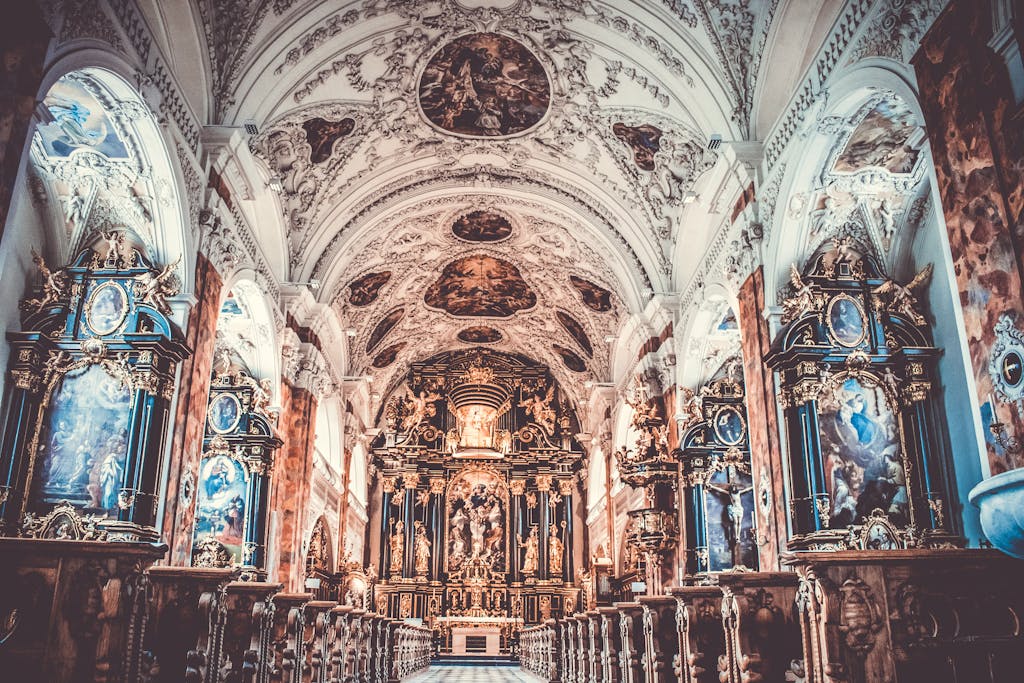John Lennon’s iconic song “Imagine” has long been celebrated as an anthem for peace and unity. Its simple yet powerful lyrics have resonated with millions around the globe. However, as much as the song calls for a utopian world devoid of conflict and division, it also invites us to ponder the implications of such a world. One of the most provocative lines in the song, “Imagine no religion,” challenges us to envision a world stripped of religious beliefs and practices. I close my eyes and imagine emptiness in the vision of John Lennon. Truly, what would the world genuinely look like without religion?
“Imagine there’s no heaven, it’s easy if you try. No hell below us, above us only sky. Imagine all the people living for today…”
John lennon
Azure Hills Music contains affiliate links and is a member of the Amazon Services LLC Associates Program. As an Amazon Associate, we earn from qualifying purchases at no extra cost to you when you purchase using one of these Amazon links. Read our disclaimer and privacy policy for more information.
Artistic Masterpieces Lost to a World Without Religion
Religion has been a profound source of inspiration for some of human history’s most outstanding artistic achievements. Imagining a world without religion is to imagine a world without many of the masterpieces that define our cultural heritage.

Musical Compositions Inspired by Religion
Many of the world’s greatest musical compositions have deep roots in religious themes. Johann Sebastian Bach, one of the most influential composers in history, created countless works inspired by his Christian faith. His Mass in B Minor and St. Matthew Passion are just two examples of how religious themes have inspired works that have stood the test of time. Similarly, Wolfgang Amadeus Mozart’s Requiem and Ludwig van Beethoven’s Missa Solemnis are masterpieces deeply intertwined with religious sentiments. Even the incredible Goldberg Variations by J.S. Bach is filled with incredible musical metaphors that stem from mystery of the Holy Trinity.
Religious music isn’t confined to classical genres. Bob Dylan’s Highway 61 Revisited, with its biblical references, and The Byrds’ Turn! Turn! Turn!—which directly quotes from the Bible’s Book of Ecclesiastes—are seminal works in the rock genre that draw from religious texts. Even The Beach Boys’ God Only Knows incorporates spiritual undertones, reflecting how religion permeates even the most unexpected corners of musical creation.

Artistic Masterpieces Inspired by Religion
Religious themes have also given birth to some of the most iconic paintings and sculptures. Imagine a world without Leonardo da Vinci’s The Last Supper or Michelangelo’s Sistine Chapel Ceiling. These works, inspired by Christian narratives, are artistic achievements and cultural touchstones that have influenced countless generations. The absence of religion would mean the loss of these visual narratives that have profoundly shaped how we understand history, spirituality, and the human experience.
Architectural Wonders Inspired by Builders Who Imagined Religion
Religion’s influence extends to the realm of architecture, where it has inspired some of the most breathtaking structures ever created. The Gothic cathedrals of Europe, such as Notre-Dame de Paris and Chartres Cathedral, are architectural marvels that would not exist in a world without religion. These structures were not only places of worship but also embodiments of their time’s artistic and engineering prowess.
Similarly, the Hagia Sophia in Istanbul, built initially as a Christian cathedral and later converted into a mosque, is a testament to religion’s profound impact on architecture. Even the simple yet stunning design of a Japanese Shinto shrine or the intricate carvings of Hindu temples highlight how religion has inspired diverse architectural forms across the globe.
These artistic, musical, and architectural treasures would never have existed without religion. Imagining a world without them erodes a significant cultural heritage.
The Hypocrisy of “Imagine No Possessions”
Another line from Lennon’s song, “Imagine no possessions,” suggests a world free from materialism and greed. However, this sentiment seems starkly hypocritical when juxtaposed with Lennon’s life. As a member of The Beatles and a solo artist, Lennon amassed significant wealth, owned luxurious homes, and indulged in the finest material comforts. Even the piano on which John Lennon played Imagine, a white Steinway, today costs somewhere between $75,000 to $170,000. That’s more than the median average salary in the USA – for an entire year! While living without possessions may seem noble, it’s worth questioning how sincerely Lennon adhered to this ideal.
The line, “Imagine no possessions,” is particularly ironic when we consider that Lennon’s wealth allowed him the freedom to imagine such a world from a position of comfort. For the average person, possessions are not just material goods but necessities—homes, clothing, and work tools— essential for survival and well-being. Imagining a world without possessions overlooks the reality that material wealth, when used responsibly, can be a force for good.
But I’m not the only one
Bernie Taupin Dares To Differ
Having finished the Bernie Taupin biography “Scattershot,” the accomplished lyricist mentions much of the same sentiment toward the end of his book. It reminded me that I’m not the only one who reacts this way to the John Lennon song.
A Dangerous Mindset
Imagine there’s no heaven? While Bishop Robert Barron is a lifelong Beatles fan, and especially of John Lennon, he provides an interesting commentary on this song. The author of Word On Fire and
Catholicism: A Journey to the Heart of the Faith. Food for thought for this unfortunate secular anthem.
A World Where Anything Goes?
On one hand, the world John Lennon told us to imagine can seem stark with a feeling of overhelming emptiness. On the other hand, it could be a world where anything goes. File under “Be careful what you ask for.”
“If there is no God, everything is permitted”
Jean-Paul Sartre (also attributed to Dostoevsky)
Conclusion: Imagining a Different World
In the end, while “Imagine” may be a beautiful song with a hopeful message, it has flaws. Imagining a world without religion or possessions might seem like a path to peace, but it also means losing much of what makes our world rich, diverse, and meaningful. The arts, music, architecture, and even our most cherished traditions would be fundamentally altered or erased in such a world.
I realize I may be in the minority regarding my views on “Imagine.” Many see it as an anthem for a better world. But for me, the world Lennon imagines lacks the very things that give life depth and meaning. What John Lennon sung to imagine, resonates as a world of emptiness with this listener. Rather than imagining a world stripped of its complexities, I’d rather live in a world that celebrates the diversity of human experience—even if that means acknowledging the conflicts and contradictions that come with it.
Thanks for reading – even (and perhaps especially) if your sentiments differ. In the meantime,
I might be praying, I hope someday you’ll join me 🙂
Arthur Dobrucki



